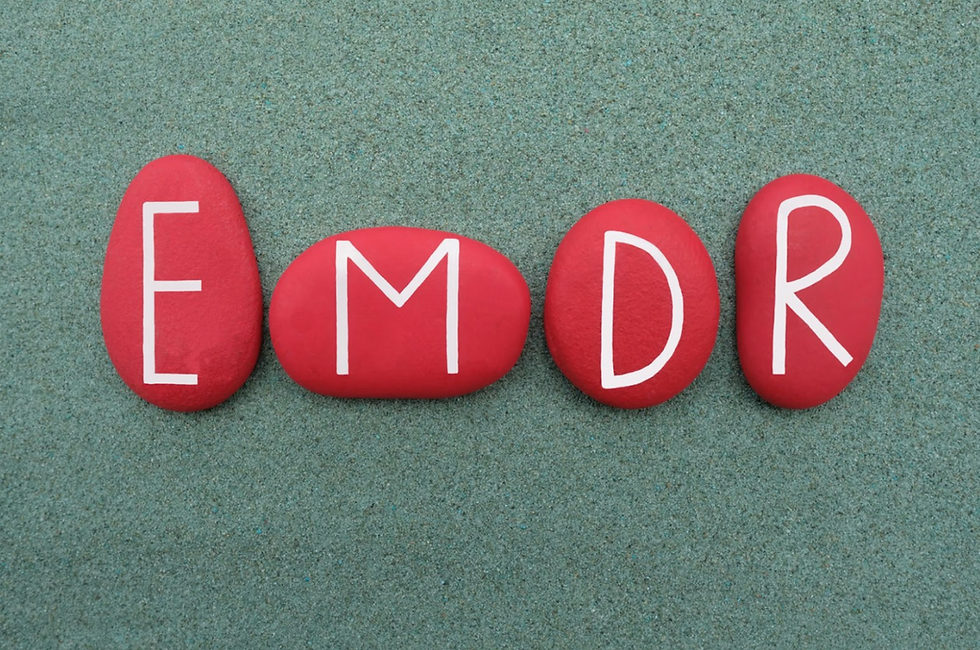Attachment, in the context of psychology, is the foundational bond that forms between a child and their caregiver. Grounded in developmental psychology and supported by decades of research, attachment theory offers meaningful insight into how our earliest relationships influence the way we relate to others across the lifespan.
At VMA Psych, we help individuals and families explore how these attachment patterns develop, how they shape emotions and behaviour, and how healing and growth remain possible at any stage of life. In this article, we examine the four primary attachment styles, the caregiving patterns that contribute to them, and the lasting impact they can have on adult relationships.
What Is Attachment Theory?
Originally developed by British psychologist John Bowlby and later expanded by Mary Ainsworth, attachment theory proposes that the emotional bonds formed in early childhood serve as templates for future relationships. When children experience consistent, responsive caregiving, they develop a secure base from which to explore the world. When care is inconsistent, unavailable, or frightening, children adapt in ways that may serve short-term survival, but may also create long-term relational challenges.
The Four Attachment Styles
1. Secure Attachment

Childhood Experiences: Secure attachment develops when caregivers are consistently responsive, attuned, and emotionally available. These caregivers validate the child’s feelings, offer comfort, and provide a predictable environment. Children learn that it is safe to express emotions and seek support.
Adult Impact: Adults with secure attachment are generally comfortable with intimacy and independence. They can communicate effectively, manage conflict in healthy ways, and trust others while also maintaining boundaries. They tend to form balanced, emotionally fulfilling relationships.
Parenting Behaviours That Support Secure Attachment:
Responding to a child’s distress with empathy, consistency, and emotional presence
Encouraging exploration while providing a dependable emotional base to return to
Naming, validating, and normalizing emotions without judgment or dismissal
Being attuned to the child’s verbal and non-verbal cues, offering appropriate and timely support
Establishing predictable routines that foster a sense of safety and trust
Repairing misattunements through honest, age-appropriate conversations and reconnection
Modelling healthy emotional regulation and respectful communication in daily interactions
2. Anxious (Preoccupied) Attachment

Childhood Experiences: This style often emerges when caregiving is inconsistent—sometimes nurturing, other times unavailable or intrusive. Children may become hyper-vigilant to their caregiver's moods and develop anxiety around whether their needs will be met.
Adult Impact: Adults with an anxious attachment style often seek high levels of closeness and reassurance in relationships. They may fear abandonment, struggle with self-worth, and interpret ambiguous situations as signs of rejection. This can lead to clinginess, overdependence, or conflict in intimate relationships.
Parenting Behaviours Linked to Anxious Attachment:
Inconsistently meeting a child’s emotional needs — at times attentive, at other times unavailable or distracted
Using guilt, emotional enmeshment, or over-involvement to influence behaviour
Reacting unpredictably to a child’s distress, leading to confusion about when support is available
Seeking emotional closeness through the child rather than fostering the child’s emotional independence
Demonstrating heightened emotional reactions that the child feels responsible for managing
Creating an environment where the child becomes attuned to the caregiver’s needs over their own
Offering affection conditionally, based on the child’s compliance or emotional performance
3. Avoidant (Dismissive) Attachment

Childhood Experiences: Avoidant attachment can form when caregivers are emotionally distant, dismissive, or frequently encourage independence at the expense of emotional connection. Children may learn to suppress emotional needs to avoid rejection or disapproval.
Adult Impact: Adults with avoidant attachment often value self-reliance and may downplay the importance of close relationships. They may struggle with vulnerability, have difficulty expressing emotions, or seem emotionally unavailable in partnerships.
Parenting Behaviours Linked to Avoidant Attachment:
Minimizing or ignoring a child’s emotional expressions
Valuing independence over emotional connection
Discouraging the display of vulnerability, need, or dependency
Responding to distress with discomfort, detachment, or withdrawal
Praising self-sufficiency while subtly shaming emotional needs
Using logic or problem-solving in place of emotional validation
Creating an environment where emotions are viewed as inconvenient or excessive
4. Disorganized (Fearful-Avoidant) Attachment

neglect, or frightening caregiving. A child may experience their caregiver as both a source of comfort and fear, creating confusion and internal conflict about seeking closeness.
Adult Impact: Adults with disorganized attachment often exhibit a push-pull dynamic in relationships. They may crave intimacy but fear getting hurt, leading to difficulty trusting others, emotional dysregulation, or unstable connections. This style is most commonly linked to unresolved trauma or early experiences of abuse.
Parenting Behaviours Linked to Disorganized Attachment:
Caregivers who are threatening, abusive, or neglectful
Exposure to unpredictable or chaotic home environments
Lack of emotional safety and support
Caregivers who are simultaneously a source of comfort and fear, creating confusion in the child’s internal world
Inconsistent responses to a child’s distress — sometimes soothing, other times punitive or dismissive
Parental mental health challenges or substance use that interfere with attunement and consistency
Intergenerational trauma or unresolved caregiver trauma impacting emotional availability and regulation
How Attachment Shows Up in Adult Relationships
Our attachment style influences how we respond to conflict, express intimacy, set boundaries, and manage emotional needs in close relationships. While these patterns are rooted in early experiences, they are not fixed. Through insight, therapy, and healthy relationship experiences, people can shift toward more secure ways of connecting.
In romantic relationships, attachment styles may look like:
Secure: Open communication, emotional regulation, trust, and mutual support.
Anxious: Frequent reassurance-seeking, fear of abandonment, heightened emotional responses.
Avoidant: Difficulty with closeness, emotional distancing, fear of dependency.
Disorganized: Inconsistency in behaviour, high emotional reactivity, and trust issues.
In friendships and work settings, attachment can influence:
Willingness to collaborate and trust others
Response to feedback or conflict
Comfort with vulnerability and emotional expression
Is a Secure Attachment Style Necessary for Healthy Relationships?
In Short: No, but it helps.
You can build healthy relationships with insecure attachment styles. People with anxious, avoidant, or even disorganized attachment styles can absolutely form healthy, meaningful relationships. However, they may need to work more intentionally on things like:
Emotional awareness and regulation
Communication skills
Boundary-setting
Trust and intimacy
Reassurance and conflict repair
To learn more about healthy relationship dynamics and what they look like, check out our article What Does A Healthy Relationship Look Like: 8 Key Signs To Watch For
Can Attachment Styles Change?
Yes. Attachment styles are not fixed. With intentional self-reflection, supportive relationships, and therapeutic intervention, individuals can develop more secure attachment patterns.
At VMA Psych, we work with individuals and families to:
Explore attachment histories and relational patterns
Build emotional awareness and self-regulation skills
Repair parent-child relationships through coaching and therapy
Develop communication strategies rooted in empathy and respect
Whether you're navigating your own relational challenges or seeking support for your child, understanding attachment is a key step toward growth and connection.
For further reading on the subject, check out Attached: The New Science of Adult Attachment and How It Can Help You Find-and Keep-Love. Another great resource is Amir Levine's book, Attached , which is a great foundation for understanding attachment theory and styles. It can be found here.
Secure Attachment Is a Strong Foundation, Not a Guarantee
Even people with a secure attachment style can face relationship challenges. Secure attachment simply offers a greater capacity for:
Emotional resilience
Mutual respect and responsiveness
Constructive conflict resolution
Comfort with both closeness and independence
Final Thoughts
Attachment styles provide a powerful lens for understanding the emotional blueprints that guide our relationships. They are not labels or life sentences but starting points for awareness, healing, and change. If you're curious about your attachment style or want to better support your child in developing secure relationships, our team at VMA Psych is here to help.
Explore our counselling, parenting support, and assessment services at
www.vmapsych.com
Welcome to VMA Psych.
Your trusted provider of exceptional mental health services in the GTA & beyond. Learn More
With 40+ years as Toronto's leading psychologists, we guide individuals through life's complexities, offering specialized services for a brighter future.





















